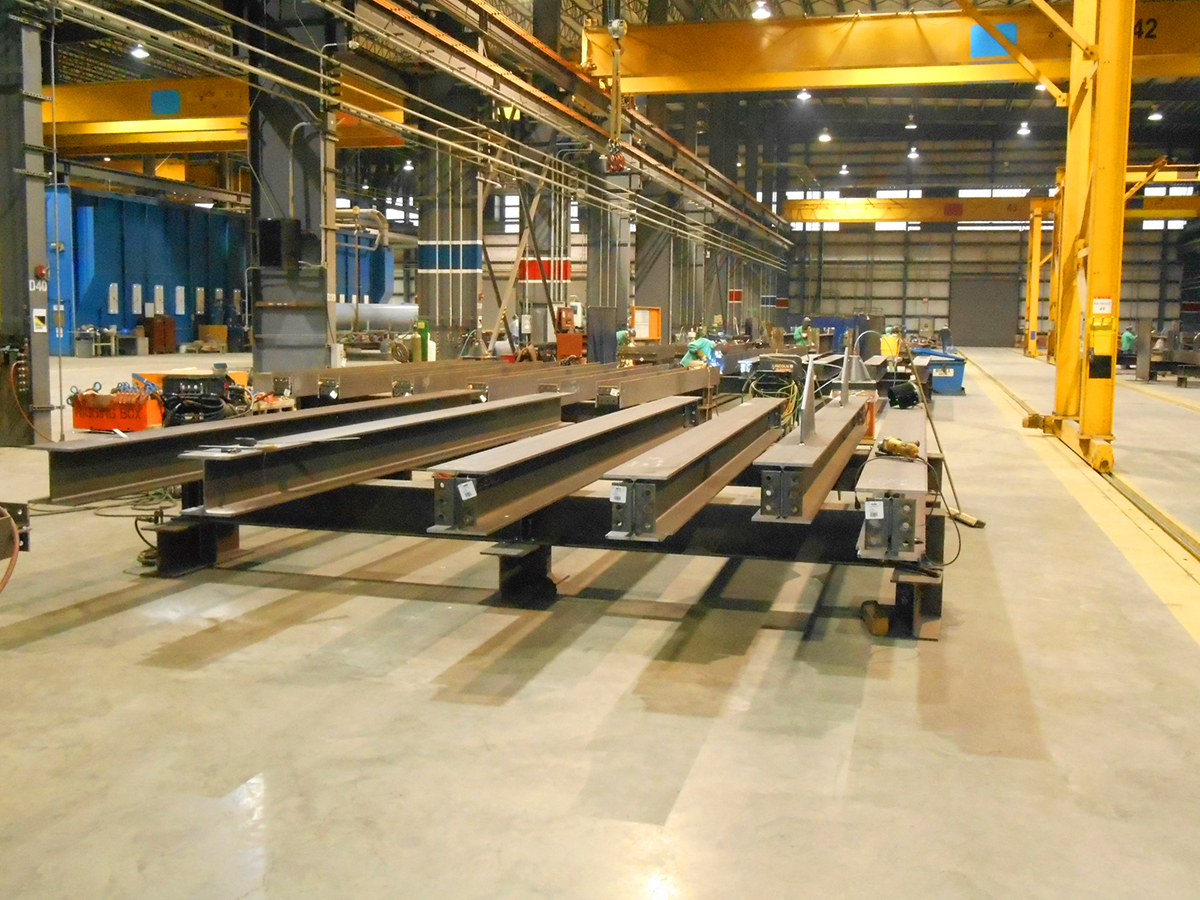Specialist Steel Fabricators Melbourne: Quality You Can Count On
Specialist Steel Fabricators Melbourne: Quality You Can Count On
Blog Article
Cutting-edge Trends in Steel Manufacture: Enhancing Toughness and Accuracy
In the world of steel manufacture, the pursuit of toughness and accuracy has actually led to a wave of innovative patterns that are improving the sector. These fads are not just forming the existing however also laying the foundation for the future of steel manufacture, promising additional improvements in durability and precision.
Advanced Welding Technologies
In the realm of steel construction, the adoption of sophisticated welding technologies has actually significantly transformed the industry's approach to accomplishing exceptional high quality and precision in structural welds. Advanced welding technologies, such as laser beam welding and friction stir welding, have arised as game-changers in the area. Laser beam of light welding uses a concentrated laser beam of light to join metal components with exceptional accuracy and speed, making it ideal for thin products and complex styles. On the other hand, friction mix welding develops exceptionally solid bonds by mechanically intermixing the molecules of the materials at the joint, removing the demand for thawing the metal. These technologies offer many advantages, including reduced heat-affected areas, very little distortion, and improved mechanical homes in the welded joints. By leveraging these advanced welding techniques, steel producers can raise the sturdiness, stamina, and precision of their architectural welds, satisfying the increasingly requiring demands of modern building and construction jobs.
Robotic Automation in Construction
Embracing robotic automation has actually come to be a foundation of modern-day steel fabrication practices, simplifying procedures and improving performance throughout the industry. Robots are changing the means steel components are produced, using unrivaled accuracy and rate while lowering human error. These automated systems can deal with repeated tasks with regular precision, leading to better output.
One secret benefit of robot automation in steel fabrication is the ability to work around the clock without fatigue, considerably increasing production output. This constant operation minimizes downtime and speeds up job timelines, eventually conserving prices for producers. In addition, robotics can be set to perform intricate tasks that may be harmful or difficult for human employees, boosting security in the office.
Furthermore, robotic automation allows seamless combination with various other digital technologies, such as computer-aided layout (CAD) software and Internet of Things (IoT) systems (metal fabrication melbourne). This interconnected approach improves interaction in between different phases of construction, maximizing operations and ensuring real-time surveillance and control. As the steel manufacture industry proceeds to develop, robotic automation attracts attention as a transformative pressure driving efficiency and accuracy in manufacturing processes

High-Strength Alloy Advancement
The advancement of high-strength alloy advancement in steel manufacture is improving the market's approach to improving material resilience and performance. High-strength alloys are engineered to show remarkable mechanical buildings, such as boosted tensile toughness, strength, and deterioration resistance compared to traditional steel qualities. By integrating these advanced alloys into manufacture processes, manufacturers can create elements that hold up against higher stress and anxiety degrees and rough atmospheres, resulting in even more durable and trusted output.
One secret benefit of high-strength alloy growth is the ability to lower Recommended Reading material density without jeopardizing architectural integrity. This not only results in lighter-weight components however also adds to cost financial savings and improved performance in fabrication and assembly processes. The improved strength-to-weight ratio of these alloys permits for the layout and construction of frameworks with higher load-bearing abilities while decreasing general weight.
3D Modeling and Simulation Software Application
Advancements in steel manufacture processes have been considerably driven by the assimilation of sophisticated 3D modeling and simulation software tools. These devices allow fabricators to create detailed digital models of their projects, allowing them to envision the last item with accuracy prior to any kind of physical job starts.

Sustainable Practices in Steel Manufacturing
Including sustainable techniques into steel manufacturing processes is crucial for reducing environmental effect and ensuring long-lasting source availability. One crucial lasting method is the fostering of energy-efficient innovations to lower greenhouse gas emissions throughout the steel manufacturing procedure. This includes utilizing renewable resource resources, such as solar or wind power, to power steel plants and implementing energy-efficient equipment to optimize power usage.
One more critical aspect of lasting steel production is the liable sourcing of raw products. This entails ensuring that the iron ore and other resources made use of in steelmaking are obtained from eco friendly and ethical sources. By advertising openness in the supply chain and adhering to rigorous ecological standards, steel producers can sites lessen the adverse impacts of source removal on local communities and neighborhoods.

Verdict
To conclude, the ingenious patterns in steel fabrication such as innovative welding innovations, robotic automation, high-strength alloy advancement, 3D modeling and simulation software application, and lasting techniques are improving the see this site longevity and precision of steel products. These developments are revolutionizing the steel manufacture market by improving sustainability, quality, and efficiency. It is clear that the future of steel construction lies in embracing these advanced innovations to meet the needs of modern building and construction and manufacturing sectors.
In the realm of steel manufacture, the quest of resilience and accuracy has led to a wave of ingenious fads that are reshaping the sector.In the realm of steel construction, the fostering of advanced welding modern technologies has substantially changed the market's strategy to achieving remarkable top quality and precision in structural welds. As the steel construction industry continues to advance, robot automation stands out as a transformative pressure driving efficiency and precision in producing procedures.
Furthermore, recycling and reusing steel scrap and waste materials play a considerable duty in enhancing the sustainability of steel production. steel fabricators melbourne.In final thought, the ingenious fads in steel fabrication such as advanced welding modern technologies, robotic automation, high-strength alloy development, 3D modeling and simulation software application, and sustainable techniques are improving the longevity and precision of steel products
Report this page